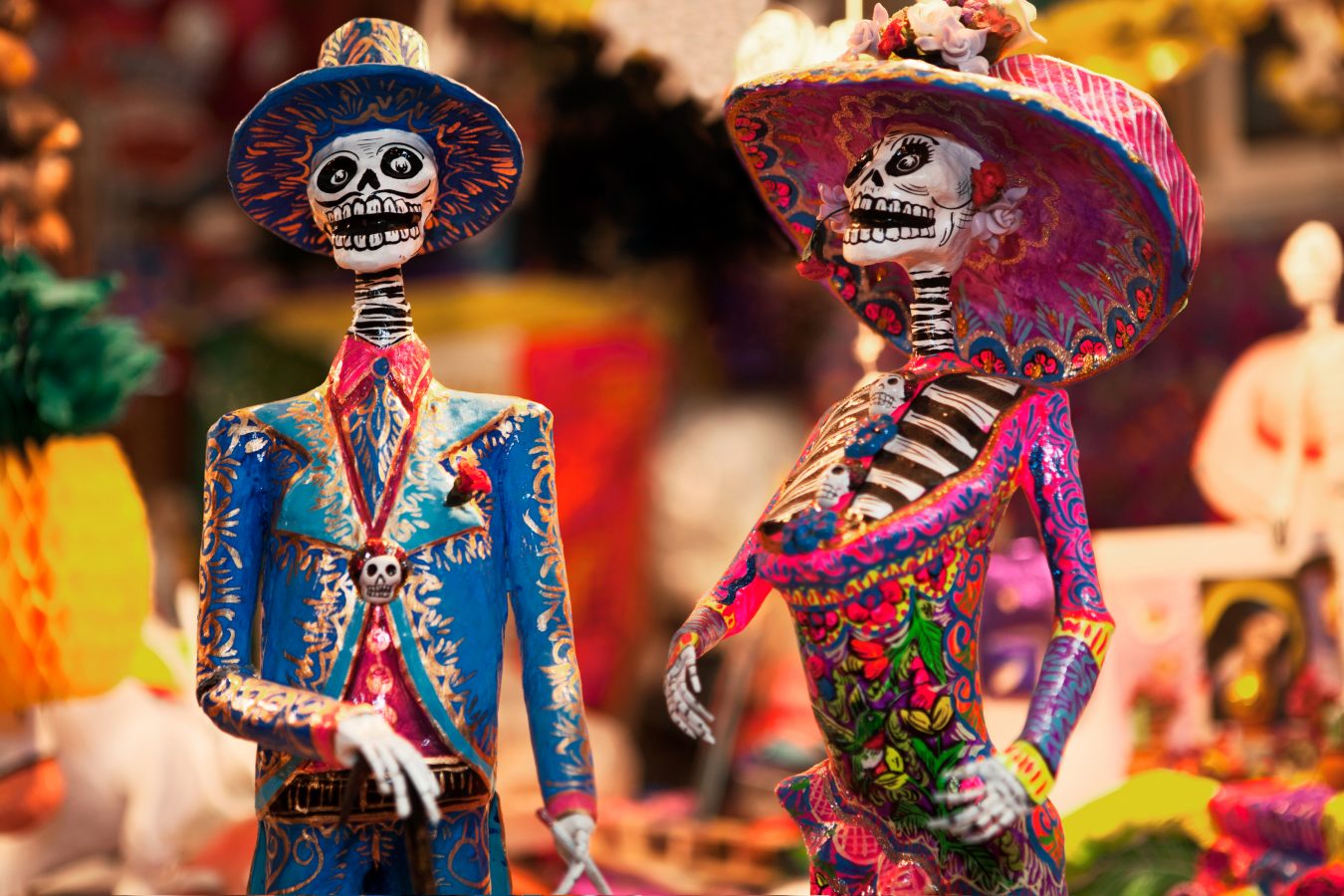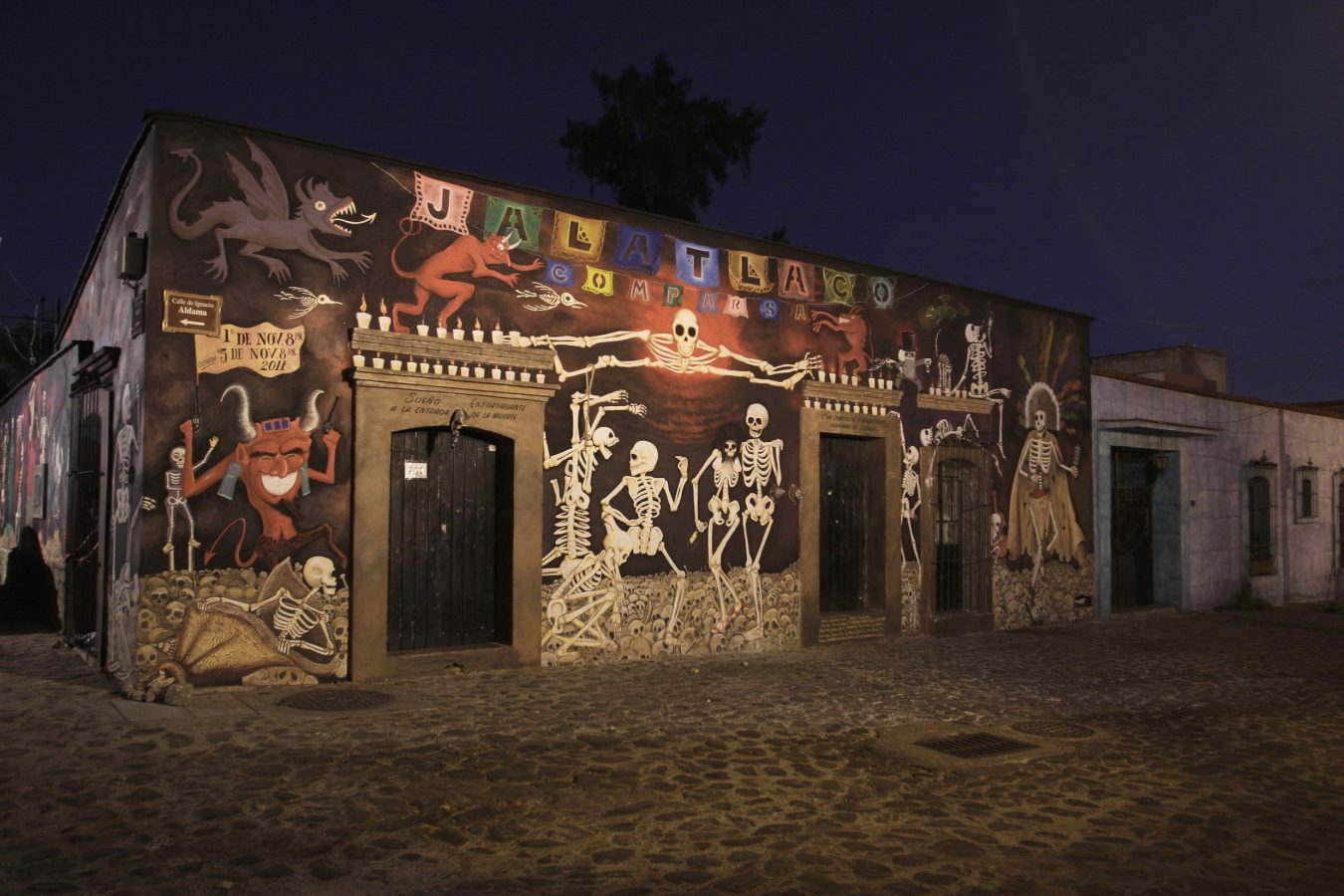In the opening scene of Spectre, the 2015 James Bond movie, Daniel Craig, hidden behind a mask, walks along ghosts and spirits on the streets of Mexico City as celebrants mark the Day of the Dead in a parade. It’s a stunning work of fiction and imagination.
Until the movie, Mexico City didn’t have such an event—but in a twist where cinema becomes reality, the Mexican tourism office staff received so many requests from visitors to attend the parade that they decided to make the festivities come alive for the first time in 2016.
The Day of the Dead (Dia de los Muertos in Spanish) is one of the world’s most extraordinary and macabre cultural celebrations in which participants remember family and friends who have died. Most of the activities tied to this celebration date back 2,500 years and take place over two nights. November 1 is when families honour and invite back the spirits of children who have died, and November 2 is the time for welcoming the souls of adult ancestors.
Mexico City is the largest metropolis in the Western world; no wonder it is called The Monster. I choose to stay in a hotel on the famous Paseo de la Reforma, an avenue that runs through the heart of the city. It is a great location not only because it is only footsteps from the historical downtown, restaurants, museums, and shopping, but also because it frees me from worrying about the city’s never-ending traffic jams. Plus, I can see the Day of the Dead parade moving across the avenue.
To start the spooky celebrations, nothing is better than a Mexican breakfast with chocolate batido, an authentic bittersweet chocolate drink, accompanied by a basket of pan de muerto (bread of the dead)—baked sweet rolls only made during this time of the year and designed to look like crossbones and skulls.
Walking a couple blocks from the hotel, I find the Angel of Independence, one of the most important landmarks in the city. Towering in the middle of Paseo de la Reforma, the monument upholds a bronze depiction of the Greek Goddess of Victory. There is always something happening around The Angel, as the monument is commonly known, from sport celebrations to political rallies.
Heading to Zocalo Central Square, the largest plaza in Latin America, I see people of all ages walking the surrounding streets in costumes and face paint. Window frames of houses and offices are decorated with skull masks, and marigolds abound to welcome the hundreds of musicians, actors, dancers, and acrobats who take part in the parade. At the very end, La Catrina—Mexico’s dame of death—arrives for the grand finale.
The town of San Andrés Mixquic, on the outskirts of Mexico City, is a quiet place for most of the year, but it is transformed for Day of the Dead celebrations. A bustling market sells decorations, hot tamales, fruit salads, amazing floral displays, sweets, and candles for use in vigils around the graves in the San Andrés Apóstol church cemetery. The graveyard ritual consists of leaving a picture of a deceased friend or family member along with their favourite food or drink, plus bread of the dead, at the tomb. These offerings are meant to encourage the souls to come back and visit. Toys are also brought for departed children, and bottles of liquor for adults.
The atmosphere engages all senses. Smells, colours, flavours, and sounds turn these moments of mourning into celebratory reunions.
Read up on other destinations.











